TREE FELLING Roodepoort
Professional Tree Felling Roodepoort
Fully insured & Qualified professional tree felling.
Tree Felling Roodepoort
Professional Tree Felling Roodepoort
Fully insured & Qualified professional tree felling.
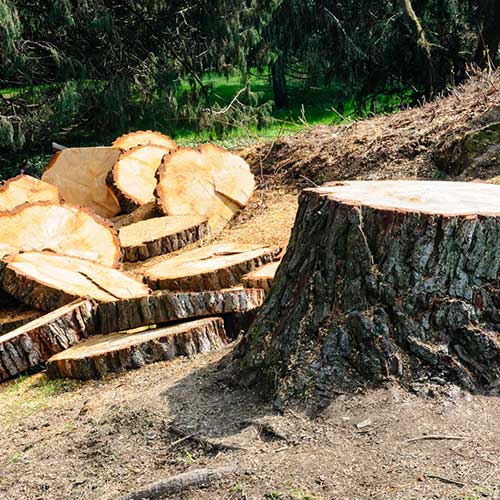
Professional Tree Felling Services in Roodepoort
Welcome to our professional tree felling services in Roodepoort. We are a team of experienced and insured tree fellers who offer a range of services including tree felling, tree trimming, stump removal, and palm removal. We pride ourselves on providing the best service possible and ensuring customer satisfaction.
- Tree Felling and Removal
- Stump Removal
- Palm Tree Removal
- Tree Trimming and Pruning
- Emergency Tree Removal
treefellingroodepoortgp@gmail.com
+27 60 070 3033

Professional Tree Felling Services in Roodepoort
Welcome to our professional tree felling services in Roodepoort. We are a team of experienced and insured tree fellers who offer a range of services including tree felling, tree trimming, stump removal, and palm removal. We pride ourselves on providing the best service possible and ensuring customer satisfaction.- Tree Felling and Removal
- Stump Removal
- Palm Tree Removal
- Tree Trimming and Pruning
- Emergency Tree Removal
treefellingroodepoortgp@gmail.com
+27 60 070 3033
THANK YOU FOR CHOOSING OUR TREE SERVICE!
Welcome to Tree Felling Roodepoort! Our team of expert arborists is committed to providing top-quality tree care and tree removal services to both residential and commercial customers in the wonderful town of Roodepoort and surrounding areas. With years of experience in the tree service industry, we are dedicated to preserving the health and beauty of your trees, while also ensuring the safety of your property. Tree Felling Roodepoort offers a wide range of professional arborist services designed to meet every need. Our team of certified arborists and experienced technicians have the knowledge and tools to provide world-class services to keep your trees healthy, vibrant and safe. Some of the main services we offer are listed below.
Tree Felling Services
Our tree felling services are carried out by experienced and insured professionals. We understand the importance of proper tree felling techniques and follow strict safety protocols to ensure the safety of our team and your property. We offer same day help for all our services and provide free quotes for each job.
Why Choose Professional and Insured Tree Fellers?
Choosing professional and insured tree fellers is important for the safety of your property and the people involved in the job. Our team is experienced and trained in proper tree felling techniques and we carry full insurance for all our services. This ensures that you are protected in case of any accidents or damage during the job.
Tree Trimming Services
Regular tree trimming is important for the health and appearance of your trees. Our tree trimming services are carried out by experienced professionals who use proper techniques to ensure the health and growth of your trees. We offer free quotes for each job and can provide regular tree trimming services to keep your trees looking their best.
The Benefits of Regular Tree Trimming
Regular tree trimming has many benefits including improved tree health, increased growth, and a more attractive appearance. Proper tree trimming techniques can also prevent damage to your property and ensure the safety of your family and neighbors.
Stump Removal Services
Stump removal is an important part of tree removal as it prevents regrowth and can improve the appearance of your property. We offer a variety of stump removal methods including grinding, chemical removal, and manual removal. Our team will assess the job and recommend the best method for your specific needs.
The Importance of Removing Stumps
Stumps can be unsightly and can also pose a safety hazard. They can also attract pests and insects which can cause damage to your property. Removing stumps can improve the appearance of your property and prevent any potential hazards.
Palm Removal Services
Palm removal is a specialized service that requires proper techniques and equipment. Our team is experienced in palm removal and can ensure that the job is carried out safely and efficiently. We offer free quotes for each job and can recommend the best method for your specific needs.
The Benefits of Removing Palms
Removing palms can improve the appearance of your property and prevent any potential hazards. Palms can also attract pests and insects which can cause damage to your property. Removing palms can also prevent any potential damage to your property during storms or high winds.
- Offer A Variety Of Tree Services
- Free Tree Service Removal Estimate
- Affordable Tree Service Company In Roodepoort
Frequently Asked Questions
What is the cost of your services?
We offer free quotes for all our services. The cost will depend on the specific service required and the size of the job.
Are you insured?
Yes, we are fully insured for all our services.
Do you offer same day help?
Yes, we offer same day help for all our services.
What methods do you use for stump removal?
We use a variety of methods including grinding, chemical removal, and manual removal.
How do you ensure safety during tree felling?
We follow strict safety protocols and use proper equipment to ensure safety during tree felling.
Do you offer tree planting services?
No, we do not offer tree planting services.
What areas do you service?
We service Roodepoort and surrounding areas.
- EXPERT & PROFESSIONAL
With years of experience within our team, we can assure our clients that they will always be satisfied with the quality of our work.
- SATISFACTION GUARANTEE
We approach our work with utmost seriousness, and as such, our tree service contractors uphold a high standard in delivering tree removal services.
- HIGH QUALITY WORK
We are committed to high-quality work. Our expert team ensures top-tier services, client satisfaction, and excellent tree care and removal.
WHAT WE OFFER
FULL-SERVICE TREE SERVICE SOLUTIONS
We provide a wide variety of tree removal services in and around the Roodepoort area. Our aim is to remove your tree safely and efficiently while keeping our prices low. We take great care to ensure we keep our clients happy and satisfied.
We offer a wide variety of services for pruning, trimming, and removing trees and shrubbery. Our team is highly trained in the art of caring for trees and shrubbery of all types.
Tree Felling provides stump removal services for residential and commercial clients in and around the Roodepoort areas.
If any of your palm trees have become more trouble than they’re worth, or you just simply need to remove them to make space, Trust Affordable Tree Service with the palm tree removals.
If you have fallen trees on your property that are a danger to your family, your property and neighbouring power lines, you need Affordable Tree Service for all your emergency and storm response 24-hour tree removal requirements.
How Our Tree Service Company Works
At Tree Felling Roodepoort, we value simplicity and doing things correctly. Forget about contractors who complicate matters – we’re different! You call, we show up, we deliver… it’s that simple.
- 1 - QUALITY & EXPERTISE
With our professional team boasting years of experience, you can rest easy knowing that we will deliver exceptional quality of work when tending to your trees.
- 2 - TIME - SAVING
- 3 - SAFETY
Tree Felling Roodepoort specialises in tree felling and removal, stump removal, palm tree removal, emergency tree removal, tree trimming, and pruning. If you need any of our services, we can provide them for you.
Just give us a call for a free quotation
We Service all areas around Roodepoort.
Allen’s Nek, Alsef AH, Ambot, Amorosa, Bergbron, Breaunanda, Carenvale, Constantia Kloof, Cosmo Business Park, Cosmo City, Creswell Park, Davidsonville, Delarey, Discovery, Eagle Canyon Golf Estate, Fleurhof, Floracliffe, Florida, Florida Glen, Florida Hills, Florida Lake, Florida North, Florida Park, Florida View, Georginia, Goudrand, Groblerpark, Hamberg, Harveston AH, Helderkruin, Helderkruin View, Honeydew, Honeydew Grove, Honeydew Manor, Honeydew Ridge, Honeyhills, Honeypark, Horison, Horison Park, Horizon View, Industria North, Kimbult AH, Kloofendal, Laser Park, Lea Glen, Lindhaven, Little Falls, Manufacta, Maraisburg, Mostyn Park, Ontdekkerspark, Poortview, Princess AH, Quellerina, Radiokop, Rand Lease, Reefhaven, Robertville, Roodekrans, Roodekrans AH, Roodepoort Central, Roodepoort North, Roodepoort West, Ruimsig, Ruimsig AH, Ruimsig Country Estate, Ruimsig Noord, Selwyn, Sonnedal AH, Stormill, Strubensvallei, Technikon, Tres Jolie, Weltevreden Park, Whiteridge, Wilfordon, Wilgeheuwel, Willowbrook, Wilro Park, Witpoortjie, Zandspruit, Zonnehoewe AH,
Weather in Roodepoort, GP

Broken Clouds
70°F
Temperature
2mph
Wind Speed
70%
Humidity
About Roodepoort, GP
Roodepoort is a town in the Gauteng province of South Africa. Formerly an independent municipality, Roodepoort became part of the Johannesburg municipality in the late 1990s, along with Randburg and Sandton. Johannesburg’s most famous botanical garden, Witwatersrand National Botanical Gardens (now renamed Walter Sisulu National Botanical Garden), is located in Roodepoort. == History == In 1884, brothers Fred and Harry Struben, having discovered gold on the farm Wilgespruit at the western end of the Witwatersrand, were granted concessions to mine the area. When George Harrison’s find at Langlaagte came to light and gold fever took hold, the Struben brothers were joined by a swarm of gold diggers. Other areas such as Maraisburg were prospected and mined by A.P. Marais and at Florida, the owners were van der Hoven, Bantjies and Lys.: 286 Though the Struben brothers’ Confidence Reef bore little gold and their mine was unprofitable, the ramshackle town that grew around it became the Roodepoort Municipality in 1904.: 286 Incorporating the towns of Hamburg, Florida and Maraisburg, Roodepoort became a city in 1977, and has since developed as one of Johannesburg’s most predominantly Afrikaans (language of Dutch origin) speaking districts.: 286 == Ethnicity == Traditionally, Roodepoort was an Afrikaans-speaking area, but after apartheid, the area has attracted different ethnic groups and the dominant language is now English. The rapid expansion of middle-class housing in the area has caused an influx of all ethnic groups, most of whom are middle class. == Economy == === Retail === Roodepoort has seen large population growth due to Johannesburg urban sprawl. There are two major malls in the area – Clearwater Mall, the most upscale in Roodepoort, and Westgate Mall the largest and oldest. Areas of interest for entertainment include the Featherbrooke Village Centre which is close to the old Monash University (now the IIE MSA) and is a student hotspot.
Neighborhoods in Roodepoort, GP
Allen’s Nek, Alsef AH, Ambot, Amorosa, Bergbron, Breaunanda, Carenvale, Constantia Kloof, Cosmo Business Park, Cosmo City, Creswell Park, Davidsonville, Delarey, Discovery, Eagle Canyon Golf Estate, Fleurhof, Floracliffe, Florida, Florida Glen, Florida Hills, Florida Lake, Florida North, Florida Park, Florida View, Georginia, Goudrand, Groblerpark, Hamberg, Harveston AH, Helderkruin, Helderkruin View, Honeydew, Honeydew Grove, Honeydew Manor, Honeydew Ridge, Honeyhills, Honeypark, Horison, Horison Park, Horizon View, Industria North, Kimbult AH, Kloofendal, Laser Park, Lea Glen, Lindhaven, Little Falls, Manufacta, Maraisburg, Mostyn Park, Ontdekkerspark, Poortview, Princess AH, Quellerina, Radiokop, Rand Lease, Reefhaven, Robertville, Roodekrans, Roodekrans AH, Roodepoort Central, Roodepoort North, Roodepoort West, Ruimsig, Ruimsig AH, Ruimsig Country Estate, Ruimsig Noord, Selwyn, Sonnedal AH, Stormill, Strubensvallei, Technikon, Tres Jolie, Weltevreden Park, Whiteridge, Wilfordon, Wilgeheuwel, Willowbrook, Wilro Park, Witpoortjie, Zandspruit, Zonnehoewe AH
Things To Do in Roodepoort, GP
Bus Stops in Roodepoort, GP to Tree Felling Roodepoort
Bus Stop in Roodepoort Central Bus Stop Roodepoort, GP to Tree Felling Roodepoort
Bus Stop in Witpoortjie Bus Stop Roodepoort, GP to Tree Felling Roodepoort
Bus Stop in Honey Dew Bus Stop Roodepoort, GP to Tree Felling Roodepoort
Bus Stop in Roodepoort Station Taxi Rank, Kroon Str Roodepoort, GP to Tree Felling Roodepoort
Bus Stop in Constantia Park Bus Stop Roodepoort, GP to Tree Felling Roodepoort
Bus Stop in Roodepoort Station Taxi Rank, Station Str Roodepoort, GP to Tree Felling Roodepoort
Bus Stop in Roodepoort Station Taxi Rank, Mooi Str Roodepoort, GP to Tree Felling Roodepoort
Bus Stop in Fifth Ave, Roodepoort-Noord Roodepoort, GP to Tree Felling Roodepoort
Bus Stop in Roodepoort Station Taxi Rank, Manufacta Roodepoort, GP to Tree Felling Roodepoort
Bus Stop in Roodepoort Taxi Rank, Station Str Roodepoort, GP to Tree Felling Roodepoort
Bus Stop in Roodepoort Station Taxi Rank, Albertina Sisulu Rd Roodepoort, GP to Tree Felling Roodepoort
Bus Stop in Roodepoort Station Taxi Rank, Adolphus Str Roodepoort, GP to Tree Felling Roodepoort
Map of Roodepoort, GP
Driving Directions in Roodepoort, GP to Tree Felling Roodepoort
Driving Directions from Triple T Tree Felling to 42 Bickel St, Horison, Roodepoort,, Roodepoort, GP, ZA, 1724
Driving Directions from Glenn’s Tree Felling to 42 Bickel St, Horison, Roodepoort,, Roodepoort, GP, ZA, 1724
Driving Directions from Big J’s Tree Felling to 42 Bickel St, Horison, Roodepoort,, Roodepoort, GP, ZA, 1724
Driving Directions from Big J’S TREEFELLING to 42 Bickel St, Horison, Roodepoort,, Roodepoort, GP, ZA, 1724
Driving Directions from Professional Tree Fellers to 42 Bickel St, Horison, Roodepoort,, Roodepoort, GP, ZA, 1724
Driving Directions from Bertie’s Treefelling to 42 Bickel St, Horison, Roodepoort,, Roodepoort, GP, ZA, 1724
Driving Directions from Brands Tree Felling to 42 Bickel St, Horison, Roodepoort,, Roodepoort, GP, ZA, 1724
Driving Directions from Proud Tree Fellers to 42 Bickel St, Horison, Roodepoort,, Roodepoort, GP, ZA, 1724
Driving Directions from Lawnking Gardens® | Tree Felling & Instant Lawns Randburg to 42 Bickel St, Horison, Roodepoort,, Roodepoort, GP, ZA, 1724
Driving Directions from Tree Felling – NorthCliff – Team A2Z to 42 Bickel St, Horison, Roodepoort,, Roodepoort, GP, ZA, 1724
Driving Directions from Randburg Tree Felling & Stump Grinding to 42 Bickel St, Horison, Roodepoort,, Roodepoort, GP, ZA, 1724
Driving Directions from Tree Fellin Joburg to 42 Bickel St, Horison, Roodepoort,, Roodepoort, GP, ZA, 1724
Legal and Compliance
- License and Certification: Ensure they have the necessary local government and industry certifications.
- Insurance: Verify they have liability insurance and workers’ compensation insurance.
- Safety Regulations: Confirm their adherence to safety standards and regulations.
- Environmental Compliance: Ensure they follow local environmental regulations regarding tree removal.
- Permits: Check if they assist with obtaining the necessary permits for tree felling.
Experience and Expertise
- Years of Experience: Consider their years in the business.
- Types of Services: Look into the range of services they offer (e.g., tree felling, pruning, stump removal).
- Specialization: Check if they specialize in residential or commercial properties.
- Previous Projects: Ask for a portfolio or examples of previous work.
- References: Request and contact references from past clients.
Safety and Equipment
- Safety Gear: Ensure they use proper safety equipment (helmets, gloves, goggles).
- Equipment Quality: Check the quality and maintenance of their equipment (chainsaws, vehicles).
- Emergency Procedures: Ask about their emergency response procedures.
- Staff Training: Inquire about the training level of their staff, especially in safety practices.
- Risk Assessment: Ensure they perform a risk assessment before starting work.
Cost and Contract
- Quotation: Request a detailed quotation.
- Payment Terms: Understand their payment terms and conditions.
- Deposit: Check if a deposit is required.
- Additional Costs: Inquire about potential additional costs (e.g., permit fees, extra services).
- Contract: Ensure there is a clear contract outlining the scope of work, timeline, and warranties.
Professionalism and Reputation
- Customer Service: Gauge their professionalism and responsiveness.
- Online Reviews: Check online reviews and ratings.
- Business Accreditation: Look for membership in professional associations.
- Complaint Resolution: Find out how they handle complaints or issues.
- After-Service Cleanup: Confirm they include cleanup and disposal in their service.
Environmental Consideration
- Tree Conservation: Understand their approach to conservation and if they offer alternatives to removal.
- Eco-friendly Practices: Check if they practice eco-friendly methods for tree removal and disposal.
- Habitat Preservation: Inquire about their methods to protect wildlife habitats.
- Replanting Services: See if they offer replanting services.
- Wood Recycling: Ask if they recycle the wood from felled trees.
Timing and Availability
- Scheduling: Confirm their availability and how it fits with your schedule.
- Timeframe: Get an estimate of how long the work will take.
- Weather Considerations: Understand how weather affects their schedule and work.
- Emergency Services: Check if they offer emergency tree felling services.
- Wait Times: Inquire about current wait times for starting a project.
Local Knowledge and Expertise
- Local Flora Knowledge: Ensure they have knowledge of local tree species.
- Soil Understanding: Check their understanding of local soil conditions and how it affects tree removal.
- Bylaws and Regulations: Confirm their knowledge of local bylaws regarding tree felling.
- Pest and Disease Management: Inquire about their ability to identify and manage tree pests and diseases.
- Impact Assessment: Ask if they conduct assessments on the impact of tree felling on your property and the environment.
Communication and Follow-up
- Consultation: See if they offer a free consultation.
- Updates: Ask how they provide updates during the project.
- Feedback Mechanism: Check their process for receiving and acting on client feedback.
- Warranty and Guarantees: Understand the warranties or guarantees they offer.
- Post-Service Support: Inquire about the support they provide after the service is completed.
Additional Services
- Stump Grinding/Removal: Check if they provide stump grinding or removal services.
- Landscaping: See if they offer landscaping services after tree removal.
- Pruning and Maintenance: Inquire about ongoing tree maintenance and pruning services.
- Disease Treatment: Ask if they offer treatment services for diseased trees.
- Consultancy Services: See if they provide tree conservation and management consultancy.
Pricing and Value
- Competitive Pricing: Compare their pricing with other service providers.
- Value for Money: Evaluate the overall value for the services offered.
- Discounts: Ask about any discounts for multiple tree removals or services.
- Payment Options: Check the available payment options.
- No Hidden Fees: Ensure they are transparent about all costs.
Quality of Work
- Quality Assurance: Understand their quality assurance processes.
- Clean Cuts: Check the quality of cuts for tree pruning or removal.
- Minimizing Damage: Ensure they take measures to minimize damage to your property.
- Efficiency: Evaluate their efficiency in completing projects.
- Professional Clean-Up: Confirm that they provide thorough clean-up after completion.
Insurance and Liability
- Damage Liability: Understand their liability in case of property damage.
- Worker Safety: Confirm their commitment to worker safety and insurance.
- Property Protection: Ask about measures they take to protect your property during work.
- Third-Party Liability: Check their coverage for third-party liability.
- Insurance Claims Assistance: Inquire if they assist with insurance claims if needed.
Technical Competence
- Cutting Techniques: Understand the different cutting techniques they use.
- Tree Health Assessment: Check their ability to assess tree health.
- Complex Removals: Inquire about their experience with complex or hazardous tree removals.
- Soil Preservation: Understand their methods for preserving soil integrity during removal.
- Root System Management: Ask about their approach to managing the tree’s root system during removal.
Accessibility and Convenience
- Location: Consider the proximity of their business to your property.
- Online Booking: Check if they offer online booking or appointment scheduling.
- Mobile Services: See if they offer services where they come to your location for assessment.
- Flexible Hours: Confirm if they have flexible hours to accommodate your schedule.
- Language: Ensure they can communicate effectively in your preferred language.
Training and Qualification
- Certified Arborists: Confirm if they employ certified arborists.
- Continuous Training: Ask about their commitment to continuous training and education.
- Specialized Training: Inquire about specialized training in areas like climbing, rigging, or equipment operation.
- Qualifications: Check the qualifications of the team who will be working on your property.
- Apprenticeship Programs: See if they run or participate in apprenticeship programs to train new arborists.
Environmental Responsibility
- Sustainability Practices: Inquire about their sustainability practices in operations.
- Biodiversity Protection: Understand how they contribute to protecting biodiversity.
- Resource Conservation: Check their efforts in conserving resources like water and soil.
- Ecosystem Services: See if they provide services that enhance ecosystem health.
- Carbon Footprint: Ask about measures they take to reduce their carbon footprint.
Customer Satisfaction
- Satisfaction Guarantee: Look for a satisfaction guarantee policy.
- Follow-Up Surveys: Check if they conduct follow-up surveys to gauge customer satisfaction.
- Testimonials: Request to see testimonials from previous clients.
- Repeat Business Rate: Inquire about their rate of repeat business or customer loyalty.
- Resolution Time: Understand their average time to resolve any complaints or issues.
Technology and Innovation
- Technological Tools: Ask about the technology tools they use for tree assessment and removal.
- Innovative Solutions: Look into any innovative solutions they offer for complex problems.
- Software for Project Management: Check if they use software for project management and communication.
- Online Resources: See if they provide online resources for customer education.
- Digital Documentation: Confirm if they provide digital documentation of services and contracts.
Community Involvement and Reputation
- Community Engagement: Inquire about their involvement in local community projects.
- Industry Reputation: Research their reputation within the industry.
- Awards and Recognitions: Ask about any awards or recognitions they have received.
- Partnerships: Check for partnerships with local organizations or environmental groups.
- Social Responsibility: Understand their commitment to social responsibility and community service.
Selecting a tree felling service involves assessing their credentials, experience, safety standards, environmental awareness, and customer service. It’s also vital to ensure they offer competitive pricing, quality work, and adhere to legal and environmental regulations.
Regulatory and Legal Aspects
- Specific Local Bylaws: Roodepoort has unique local bylaws affecting tree felling, often unknown to residents.
- Protected Tree Species: Certain tree species in Roodepoort are protected and cannot be felled without special permission.
- Permit Requirements: The process for obtaining a tree felling permit is more intricate than commonly understood.
- Penalties for Illegal Felling: Penalties for unauthorized tree removal can be severe, including fines and mandatory replanting.
- Boundary Laws: There are specific regulations regarding trees on property boundaries that many aren’t aware of.
Environmental Impact
- Biodiversity Loss: Tree felling can lead to significant biodiversity loss, affecting local fauna.
- Soil Erosion: The removal of trees increases the risk of soil erosion, which is a less acknowledged consequence.
- Microclimate Alteration: Trees play a crucial role in forming local microclimates; their removal can disrupt these conditions.
- Carbon Sequestration: The role of urban trees in carbon sequestration is often underestimated.
- Water Cycle Impact: Trees significantly affect the local water cycle, and their removal can lead to changes in groundwater levels and rainfall patterns.
Industry Practices
- Use of Technology: Advanced technology and software are used for planning and executing tree felling operations.
- Safety Standards: The industry follows stringent safety standards that the public might not be aware of.
- Certification and Training: Arborists undergo extensive training and certification, a fact not widely known outside the industry.
- Innovative Equipment: The use of innovative equipment and techniques in tree felling is continually evolving.
- Environmental Restoration: Many tree felling companies engage in environmental restoration efforts post-removal.
Ecological and Community Insights
- Wildlife Displacement: Tree felling can lead to the displacement of local wildlife, affecting biodiversity.
- Community Green Spaces: The impact of tree felling on community green spaces and public parks is significant.
- Noise Pollution: The process of tree felling contributes to noise pollution, which is often overlooked.
- Air Quality: Trees significantly improve air quality, and their removal can have adverse effects on local air conditions.
- Urban Heat Island Effect: The role of trees in mitigating the urban heat island effect is not widely recognized.
Economic Aspects
- Property Value: Trees can significantly increase property values, a fact sometimes overlooked when deciding to fell trees.
- Cost of Removal: The cost associated with tree felling and removal is variable and can be higher than many expect.
- Economic Benefits of Trees: Beyond aesthetics, trees offer economic benefits such as energy savings by providing shade.
- Insurance Considerations: Trees can affect homeowners’ insurance policies and claims, particularly if they pose a risk to structures.
- Job Creation: The tree felling industry creates a range of jobs, from arborists to laborers, contributing to the local economy.
Misconceptions and Unknown Facts
- Not All Trees are Beneficial: Some invasive tree species may cause more harm than good to the local ecosystem.
- Disease Management: Tree felling can be a necessary measure for controlling the spread of diseases within urban forests.
- Tree Age and Health: Older trees aren’t always healthier or safer; their structural integrity can be compromised.
- Impact on Neighboring Trees: The removal of one tree can impact the health and stability of neighboring trees.
- Legal Disputes: Disputes over tree felling can lead to legal battles between neighbors or with local authorities.
Techniques and Processes
- Precision Felling: The technique of precision felling to minimize damage is complex and requires skilled arborists.
- Stump Removal: The process of stump removal is intricate and involves methods many are unaware of.
- Tree Assessment: Arborists conduct detailed assessments to determine a tree’s health and the necessity of felling.
- Seasonal Considerations: Certain times of the year are better for tree felling, affecting growth and wildlife nesting.
- Replanting Strategies: Replanting after tree felling is strategic and considers species diversity and environmental impact.
Health and Safety
- First Aid Training: Arborists receive first aid training to handle injuries during tree felling operations.
- Emergency Response Plans: Companies have emergency response plans for accidents, which is not common knowledge.
- Public Safety Measures: Specific measures are taken to ensure public safety during tree felling, including signage and barriers.
- Worker Gear: The specialized safety gear used by workers in tree felling is designed to protect against specific hazards.
- Electrical Hazards: Tree felling near power lines is highly dangerous and requires specialized training and precautions.
Environmental Conservation
- Habitat Creation: Some tree felling practices include creating habitats for wildlife from the remaining tree parts.
- Conservation Partnerships: Tree felling companies often partner with conservation groups to mitigate environmental impacts.
- Sustainable Practices: The adoption of sustainable practices in tree felling is increasing but not widely known.
- Recycling Wood: Much of the wood from felled trees is recycled or used for biomass energy, reducing waste.
- Educational Programs: Some companies engage in educational programs to raise awareness about the importance of trees and conservation efforts.
Local Community and Culture
- Community Consultation: Before major tree felling projects, some communities engage in consultation processes.
- Cultural Significance: Certain trees may have cultural or historical significance that influences felling decisions.
- Public Opinion: Public opinion on tree felling can vary widely, affecting local policies and practices.
- Volunteer Programs: Volunteer programs for tree planting and conservation efforts exist but may not be widely publicized.
- Local Wildlife Support: Initiatives to support local wildlife affected by tree felling are in place but not widely known.
Technical and Scientific Aspects
- Tree Biology: The biology of trees, including how they respond to injuries, is complex and influences felling decisions.
- Climate Adaptation: Some tree felling is conducted to adapt urban forests to changing climate conditions.
- Soil Preservation: Techniques to preserve soil integrity during tree felling are sophisticated and not widely recognized.
- Water Management: Tree felling can affect local water management strategies, impacting drainage and runoff.
- Disease Surveillance: Surveillance programs for tree diseases help inform which trees need to be felled for health reasons.
Innovations and Future Directions
- Drone Usage: Drones are increasingly used for tree assessment and monitoring, a fact not widely known.
- Biotechnology: Advances in biotechnology are influencing tree felling, including genetic assessments of tree health.
- Urban Forestry Plans: Comprehensive urban forestry plans include strategic tree felling as part of city planning.
- Wildlife Relocation: Efforts to relocate wildlife prior to tree felling are more common than known.
- Carbon Offsetting: Some tree felling operations are part of carbon offset programs, aiming to balance environmental impacts.
Social and Ethical Considerations
- Ethical Felling: Ethical considerations in deciding which trees to fell are complex and involve multiple stakeholders.
- Community Impact Studies: Studies to assess the impact of tree felling on communities are conducted but not always publicized.
- Social Equity: The distribution of tree felling benefits and impacts can raise social equity issues.
- Indigenous Rights: In some areas, indigenous rights and knowledge influence tree felling practices.
- Public Health: The impact of tree felling on public health, including mental health benefits of green spaces, is significant but underappreciated.
Economic and Financial Aspects
- Funding Sources: Various funding sources for tree felling and replanting projects exist, including grants and private donations.
- Economic Analysis: Economic analyses of tree felling impacts, including ecosystem services valuation, are intricate.
- Insurance Premiums: The presence or absence of trees can affect property insurance premiums due to risk factors.
- Investment in Green Spaces: Investment in green spaces, including after tree felling, is crucial for urban renewal.
- Cost-Benefit Analysis: Cost-benefit analyses for tree felling projects consider long-term environmental and social impacts.
Global Perspectives and Comparisons
- International Best Practices: International best practices in tree felling vary and offer lessons for local practices.
- Global Climate Impact: The global climate impact of urban tree felling is a subject of scientific study.
- Comparative Legislation: Legislation governing tree felling varies widely around the world, with some countries offering innovative approaches.
- International Conservation Efforts: International conservation efforts impact local tree felling practices through shared knowledge and resources.
- Urbanization Trends: Urbanization trends influence tree felling practices, with growing recognition of the need for urban forests.
Technological and Methodological Innovations
- Precision Arboriculture: Advances in precision arboriculture allow for more selective and less impactful tree felling.
- Remote Sensing: Remote sensing technologies provide detailed data on urban forests, informing tree felling decisions.
- GIS in Urban Forestry: Geographic Information System (GIS) tools are crucial for planning and monitoring tree felling and replanting.
- Simulation Models: Simulation models predict outcomes of various tree felling scenarios, aiding decision-making.
- Biodegradable Chainsaw Oils: The use of biodegradable chainsaw oils and other eco-friendly materials is an emerging practice.
Policy and Governance
- Public Participation in Policy: Public participation in tree felling policies and decisions is more common than perceived.
- Governance Structures: Governance structures for urban forestry and tree felling involve multiple layers of authority.
- Policy Integration: Integration of tree felling policies with other urban planning and environmental policies is complex.
- Transparency in Decision-Making: Efforts to increase transparency in tree felling decision-making processes are ongoing.
- International Agreements: International agreements on environmental protection influence local tree felling practices.
Education and Awareness
- Educational Programs: Educational programs aim to increase public awareness about the importance of trees and responsible felling.
- Professional Development: Continuous professional development for arborists includes updates on best practices and new technologies.
- Community Workshops: Community workshops on tree care and the importance of urban forests are valuable but underutilized.
- School Initiatives: Initiatives involving schools in tree planting and conservation help build early awareness.
- Media Coverage: Media coverage of tree felling often misses the complexity of decisions and practices involved.
Challenges and Solutions
- Conflict Resolution: Conflict resolution mechanisms for disputes over tree felling are in place but not widely known.
- Invasive Species Management: The challenge of managing invasive species through tree felling requires nuanced approaches.
- Climate Resilience: Building climate resilience through strategic tree felling and replanting is a priority.
- Biodiversity Strategies: Strategies to maintain biodiversity in urban areas involve careful selection of trees for felling and replanting.
- Sustainable Urban Design: Integrating tree felling and replanting into sustainable urban design is a growing practice.
Future Directions
- Urban Forest Master Plans: The development of urban forest master plans is a forward-thinking approach to managing tree felling.
- Innovative Replanting Programs: Innovative replanting programs aim to enhance urban biodiversity and resilience.
- Citizen Science: Citizen science projects involving urban trees encourage public engagement and data collection.
- Smart Cities: The role of trees in smart cities, including their impact on health and sustainability, is an area of future focus.
- Global Urban Forestry Initiatives: Participation in global urban forestry initiatives brings new insights and practices to local tree felling and management.
- Lack of Experience: Hiring someone without sufficient experience can lead to mistakes and accidents.
- No Insurance: If the tree feller lacks insurance, you could be liable for accidents or damage.
- Improper Equipment: Using the wrong equipment can cause injury and ineffective work.
- Safety Hazards: Inadequate safety measures can lead to accidents involving people and property.
- Damage to Property: Incorrect felling techniques can result in trees falling on houses, vehicles, or other structures.
- Legal Issues: Not adhering to local regulations and permits can result in fines or legal action.
- Poor Communication: Misunderstandings about the scope of work can lead to unsatisfactory results.
- Incomplete Job: The job may be left unfinished if the contractor is unreliable.
- Overcharging: Without proper quotes, you risk being overcharged for the service.
- Underestimating the Job: Misjudging the complexity of the job can lead to inadequate preparation and results.
- Lack of References: Not checking references can result in hiring a disreputable service provider.
- Environmental Damage: Improper felling can cause damage to the surrounding ecosystem.
- Damage to Other Trees: Careless work can harm other trees and plants.
- Waste Disposal Issues: Inadequate disposal of tree waste can lead to additional costs and environmental harm.
- Timing Issues: Work not completed in a timely manner can cause inconvenience.
- Noise Complaints: Excessive noise without proper notification can upset neighbors.
- Injury to Workers: Lack of safety gear and precautions can result in injuries.
- Injury to Residents or Passersby: Falling branches or trees can injure people nearby.
- Damage to Underground Utilities: Felling without checking for underground lines can cause significant disruptions.
- Damage to Pavements or Roads: Heavy equipment can damage surrounding infrastructure.
- Improper Cutting Techniques: This can result in tree disease or death if not fully removed.
- Falling Debris: Can cause damage or injury during the felling process.
- Inaccurate Assessment: Misjudging the tree’s condition can lead to incorrect action.
- Breaching Fencing or Security: Can occur during tree removal processes.
- Disturbing Wildlife: Can harm local fauna or lead to their displacement.
- Legal Disputes with Neighbors: Over boundary issues or damage.
- Not Following Local Tree Preservation Orders: Can lead to legal penalties.
- Lack of Cleanup: Leaving a mess behind can be unsightly and dangerous.
- Using Unlicensed Contractors: Can lead to substandard work and legal trouble.
- Misjudging Tree Health: Removing a tree that could have been saved.
- Blocking Access: During the work, access to property or roads may be blocked.
- Poor Aesthetic Outcome: The landscape may be negatively impacted.
- Exposure to Chemicals: If pesticides or other chemicals are used improperly.
- Hidden Costs: Being charged for additional services not initially quoted.
- Inadequate Risk Assessment: Leading to unexpected problems during the job.
- Unnecessary Tree Removal: Removing trees that do not need to be taken down.
- Disturbance to Pets: Noise and activity can stress pets.
- Soil Compaction: Heavy machinery can damage soil structure.
- Root Damage to Other Plants: Can occur during tree removal.
- Lack of Soil Rehabilitation: After tree removal, the soil may need care.
- Ignoring Tree Growth Patterns: Can lead to incorrect removal methods.
- Not Securing Necessary Permissions: From homeowners associations or local bodies.
- Failure to Replant: Not offering or performing replanting services where necessary.
- Miscommunication About Expectations: Leading to dissatisfaction with the work performed.
- Unpredictable Weather Conditions: Not planning for weather can disrupt the job.
- Underestimating the Complexity of the Job: Leading to delays and increased costs.
- Failing to Protect Young Trees and Shrubs: Nearby plants could be damaged.
- Not Using Sustainable Practices: Which could have long-term environmental impacts.
- Lack of Transparency in Pricing: Not providing a clear, itemized quote.
- Failure to Provide a Contract: Not having a written agreement can lead to disputes.
- Inadequate Cleanup Tools: Not having the right tools for cleanup can leave debris.
- Not Adhering to Work Schedule: Causing inconvenience and extended disruptions.
- Failure to Monitor the Job’s Progress: Leading to unsatisfactory work.
- Ignoring Customer Feedback: Not adjusting practices in response to customer concerns.
- Not Offering Guarantees or Warranties: Leaving the customer with no recourse if problems arise.
- Failure to Respect Property Lines: Can lead to disputes with neighbors.
- Overlooking Wildlife Protection Laws: Can result in fines or delays.
- Inadequate Worker Training: Can lead to mistakes and accidents.
- Not Preparing for Emergency Situations: Such as sudden illness or equipment failure.
- Failure to Use Protective Barriers: To safeguard the work area and bystanders.
- Lack of Post-Service Follow-up: To ensure customer satisfaction and address any issues.
- Misuse of Pesticides or Herbicides: Which can harm the environment and non-target plants.
- Not Matching the Right Technique to the Tree: Can lead to ineffective removal.
- Failure to Secure Loose Branches: Leading to potential accidents.
- Not Taking into Account the Tree’s Impact on Ecosystems: Before removal.
- Lack of Planning for Tree Replacement: If removal impacts the landscape significantly.
- Ignoring the Importance of Soil Health: Post-removal.
- Not Considering Future Growth of Remaining Trees: Can lead to overcrowding or poor health.
- Relying Solely on Chemical Solutions: For stump removal, which can be harmful.
- Not Offering a Range of Services: Such as trimming, pruning, and maintenance.
- Failure to Assess Tree Stability: Before climbing or cutting.
- Not Providing Safety Instructions to Residents: To ensure their safety during the job.
- Improper Stump Removal: Leaving hazardous stumps behind.
- Not Informing Neighbors: About potential noise and disruption.
- Failure to Secure Permits: When required by local laws.
- Not Planning for Debris Removal: Leading to extra costs or inconvenience.
- Using Outdated Techniques: Which may not be effective or safe.
- Not Considering the Historical or Cultural Significance of Trees: Before removal.
- Ignoring Potential for Disease Spread: By not sanitizing tools.
- Lack of Attention to Detail: Leading to a poor-quality job.
- Not Providing a Detailed Work Plan: Leaving scope for misunderstanding.
- Failure to Address Customer Concerns Promptly: Leading to dissatisfaction.
- Overlooking the Need for Soil Aeration: After tree removal.
- Not Preparing for Potential Damage to Fences or Gates: During the work.
- Ignoring Tree Species Specifics: In removal strategies.
- Failure to Consider the Impact on Property Value: Negative aesthetic changes can decrease value.
- Lack of Professionalism: In customer service and conduct.
- Inadequate Supervision of Crew: Leading to inconsistent work quality.
- Not Taking Responsibility for Mistakes: Can erode trust.
- Failure to Update the Customer on Progress: Leading to uncertainty and frustration.
- Not Ensuring Clean and Safe Worksite Post-Completion: Can leave hazards.
- Ignoring the Impact on Local Biodiversity: By removing trees unnecessarily.
- Not Planning for the Long-term Health of the Garden or Landscape: After tree removal.
- Failure to Utilize Modern Arboricultural Techniques: For the health of the tree and safety.
- Not Considering the Impact on Neighboring Properties: In terms of shade, privacy, etc.
- Using Invasive Techniques When Not Necessary: Can damage property and the environment.
- Failure to Provide Adequate Warning Signs: To ensure safety around the worksite.
- Not Accounting for Seasonal Variations: In tree health and removal strategies.
- Ignoring the Need for Continuous Education: On the latest tree care practices.
- Not Building a Good Reputation: Through quality work and customer service, leading to a lack of trust and referrals.
When choosing a tree felling service, it’s crucial to conduct thorough research, check references, verify insurance and certifications, and ensure clear communication to avoid these potential problems.
- Urban Development: Rapid urbanization often leads to increased tree felling in cities like Roodepoort for housing and infrastructure development.
- Climate Impact: Trees play a crucial role in carbon sequestration, and their removal contributes to climate change.
- Biodiversity: Urban trees support local wildlife; removing trees can reduce biodiversity.
- Erosion and Flooding: Trees help prevent soil erosion and mitigate flooding. Their removal can increase these risks.
- Heat Island Effect: Urban areas with fewer trees can experience higher temperatures, known as the urban heat island effect.
- Regulations and Permits: Many municipalities, including those in South Africa, require permits for tree felling to protect valuable tree species and ensure public safety.
- Illegal Logging: Despite regulations, illegal tree felling occurs, impacting local ecosystems and communities.
- Tree Diseases: Diseases like the Polyphagous Shot Hole Borer (PSHB) can necessitate tree felling to prevent spread.
- Public Safety: Dead or dying trees pose risks to public safety and property, often leading to legally sanctioned removal.
- Reforestation Efforts: There are initiatives to replant trees and restore natural habitats that have been lost to development.
- Economic Value: Mature trees can significantly increase property values in urban areas.
- Water Conservation: Trees play a key role in the water cycle, including improving groundwater recharge and reducing runoff.
- Energy Savings: Strategic placement of trees around buildings can reduce the need for air conditioning by providing natural cooling.
- Noise Reduction: Trees can act as sound barriers, reducing noise pollution in urban areas.
- Air Quality: Trees absorb pollutants, improving air quality for urban residents.
- Cultural and Historical Significance: Some trees are protected due to their cultural, historical, or heritage significance.
- Wildlife Corridors: Urban trees can serve as important corridors for wildlife, allowing species to move between habitats.
- Community Green Spaces: Trees are integral to parks and green spaces, which contribute to community health and well-being.
- Stress Reduction: Studies have shown that green spaces with trees can reduce stress and improve mental health.
- Legal Disputes: Tree felling can sometimes lead to disputes between neighbors or between residents and local governments.
- Waste Management: The process of tree felling generates green waste that needs to be managed and disposed of responsibly.
- Recycling and Reuse: Felled trees can be recycled into mulch, furniture, or other wood products, reducing waste.
- Specialist Services: Professional arborists and tree-felling services are often required to safely remove trees, especially in urban areas.
- Insurance Claims: Damage caused by improperly felled trees can lead to insurance claims and disputes.
- Environmental Awareness: Public awareness campaigns promote the importance of trees and the need for sustainable management practices.
- Urban Forestry Programs: Cities may have urban forestry programs to manage and protect their tree populations.
- Impact on Local Economies: Tree felling and landscaping services contribute to local economies, providing jobs and business opportunities.
- Educational Programs: Schools and community groups often engage in tree planting and environmental education programs.
- Habitat Loss: Felling trees without considering wildlife can lead to habitat loss for birds, insects, and other species.
- Soil Health: Trees contribute to soil health through their root systems and leaf litter, which adds nutrients to the soil.
- Visual Impact: The removal of trees can dramatically change the landscape and visual character of a neighborhood or city.
- Seasonal Considerations: The timing of tree felling can affect wildlife nesting, blooming cycles, and the health of surrounding vegetation.
- Climate Adaptation: Trees are considered crucial for urban areas to adapt to the changing climate, offering cooling effects and stormwater management.
- Species Selection: The selection of appropriate tree species for replanting is vital for the success of urban forestry efforts.
- Maintenance Challenges: Urban trees require ongoing maintenance, including pruning, to ensure their health and safety.
- Community Involvement: Successful urban tree management often involves community input and participation.
- Technological Solutions: Technology, including GIS mapping, is used to manage urban tree populations effectively.
- Green Infrastructure: Trees are an essential component of green infrastructure, contributing to sustainable urban development.
- Pest Management: Managing pests that affect trees, such as the PSHB, requires ongoing monitoring and intervention.
- Sustainable Practices: Sustainable tree felling practices minimize the impact on the environment and support ecological balance.
- Policy and Planning: Effective urban planning and policies are crucial to protect trees and ensure sustainable development.
- Climate Zones: The choice of trees for planting in urban areas should consider local climate zones for best growth outcomes.
- Public Parks and Recreation: Trees enhance public parks, providing shade and aesthetic value for recreational activities.
- Green Belts and Buffers: Trees form natural buffers between different land uses, improving the quality of urban environments.
- Utility Companies: Utility companies often manage trees near power lines to prevent outages, sometimes leading to tree felling.
- Invasive Species Management: Managing invasive tree species to protect native biodiversity can involve selective tree removal.
- Carbon Offsetting: Tree planting and preservation are strategies for carbon offsetting, contributing to climate change mitigation.
- Water Quality: Trees help filter and regulate water quality, reducing pollution in water bodies.
- Microclimates: Trees create microclimates that can support diverse plant and animal life, even in urban settings.
- Public Health: Access to green spaces with trees is linked to improved physical and mental health outcomes for urban residents.
- Social Equity: Equitable access to tree-covered green spaces is a concern, with efforts to ensure all communities benefit.
- Ecosystem Services: Trees provide ecosystem services such as air and water purification, climate regulation, and habitat provision.
- Volunteerism: Tree planting and maintenance often rely on volunteer efforts, fostering community engagement.
- Funding and Grants: Local governments and NGOs may offer funding or grants for tree planting and urban forestry projects.
- Sustainability Goals: Urban tree management aligns with broader sustainability goals, including reducing urban sprawl and enhancing liveability.
- Climate Resilience: Urban forests help cities become more resilient to climate change impacts, such as extreme weather events.
- Educational Opportunities: Trees in urban areas offer educational opportunities about nature, conservation, and sustainability.
- Innovation in Arboriculture: Advances in tree care and management techniques contribute to the health and longevity of urban trees.
- Collaboration Between Stakeholders: Successful urban tree management involves collaboration between city officials, residents, and experts.
- Monitoring and Evaluation: Ongoing monitoring and evaluation are crucial to assess the health and impact of urban tree populations.
- Civic Responsibility: Tree care and preservation are seen as part of civic responsibility, encouraging stewardship among residents.
- Tourism and Recreation: Trees and green spaces attract tourists and provide recreational opportunities, benefiting local economies.
- Urban Wildlife: Trees support urban wildlife, offering food, shelter, and nesting sites.
- Green Jobs: The care, maintenance, and management of urban trees create green jobs in arboriculture and landscaping.
- Public Engagement: Public engagement in tree planting and care fosters a sense of community and connection to nature.
- Sustainable Urban Design: Integrating trees into urban design promotes sustainability and enhances the quality of urban life.
- Heritage Trees: Some trees are designated as heritage trees due to their age, rarity, or cultural significance, receiving special protection.
- Land Use Planning: Incorporating tree preservation into land use planning helps maintain urban green spaces.
- Environmental Justice: Addressing disparities in tree coverage across neighborhoods is part of broader environmental justice efforts.
- Public Awareness Campaigns: Campaigns raise awareness about the benefits of trees and the importance of urban tree canopy coverage.
- Community Health: The presence of trees is linked to lower rates of certain health issues, highlighting their role in community health.
- Innovative Funding Models: Innovative funding models support urban forestry projects, including public-private partnerships.
- Green Certifications: Buildings and developments can achieve green certifications by incorporating trees and green spaces.
- Adaptive Management: Adaptive management approaches allow for the ongoing assessment and adjustment of urban forestry practices.
- Local Flora and Fauna: Urban tree selection should consider compatibility with local flora and fauna to support biodiversity.
- Stakeholder Education: Educating stakeholders about the importance of trees ensures support for urban forestry initiatives.
- Climate-Smart Agriculture: Urban agriculture initiatives can benefit from the integration of trees, supporting food production and biodiversity.
- Urban Planning Integration: Trees are integrated into urban planning to ensure green spaces are preserved and expanded.
- Disaster Risk Reduction: Trees can reduce the risk of natural disasters, such as landslides and floods, by stabilizing soil and absorbing water.
- Environmental Monitoring: Environmental monitoring tools assess the health of urban forests and guide management decisions.
- Public Spaces: Trees enhance the usability and aesthetic of public spaces, making them more inviting for community use.
- Socioeconomic Benefits: The socioeconomic benefits of trees include job creation, property value increases, and health care cost savings.
- Green Corridors: Establishing green corridors with trees connects habitats and supports biodiversity in urban areas.
- Sustainable Transportation: Trees contribute to sustainable transportation efforts by providing shade and improving air quality along routes.
- Urban Biodiversity Strategies: Urban biodiversity strategies often include preserving and planting trees to support varied ecosystems.
- Tree Inventories: Urban tree inventories help manage tree populations, planning for maintenance, and identifying needs for removal or planting.
- Community Greening Initiatives: Community greening initiatives often focus on tree planting and care, enhancing local environments.
- Water Management: Integrating trees into water management strategies helps manage stormwater and reduce runoff.
- Air Pollution Mitigation: Trees play a significant role in mitigating air pollution, absorbing pollutants through their leaves.
- Thermal Comfort: Trees contribute to thermal comfort in urban areas by providing shade and reducing temperatures.
- Habitat Connectivity: Urban trees and forests enhance habitat connectivity, crucial for the survival of many species.
- Urban Acoustics: Trees can improve urban acoustics by acting as natural sound barriers, reducing noise pollution.
- Cultural Services: Beyond ecosystem services, trees provide cultural services, including aesthetic value and spaces for recreation and relaxation.
- Mental Health Benefits: Access to green spaces with trees is linked to improved mental health, including reductions in stress and anxiety.
- Community Development: Tree planting and maintenance projects can serve as catalysts for community development and engagement.
- Sustainable Development Goals (SDGs): Urban forestry contributes to several SDGs, including good health, sustainable cities, and climate action.
- Climate Change Adaptation: Trees are central to adaptation strategies, helping cities cope with the effects of climate change.
- Urban Ecology: Trees are a critical component of urban ecology, supporting diverse ecosystems within city environments.
- Renewable Resource: Trees represent a renewable resource, providing materials for construction, fuel, and other uses while supporting ecosystems.
- Global Initiatives: Global initiatives like the United Nations Urban Forestry Declaration emphasize the importance of trees in urban environments worldwide.
Tree Felling Roodepoorts Latest Work

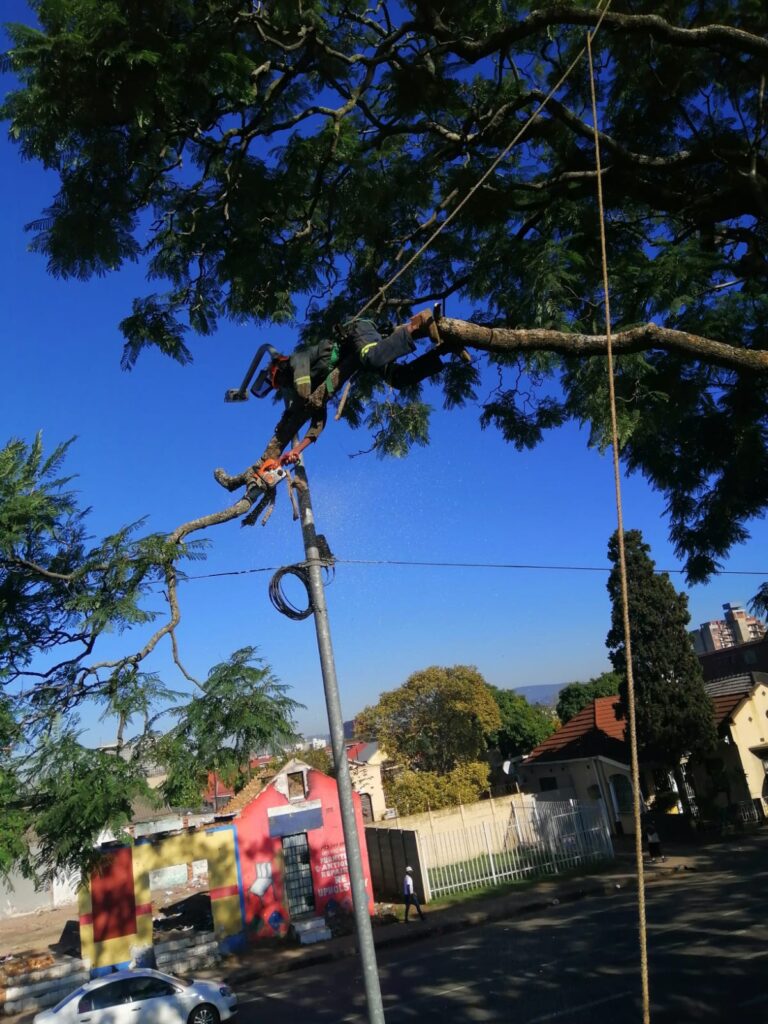
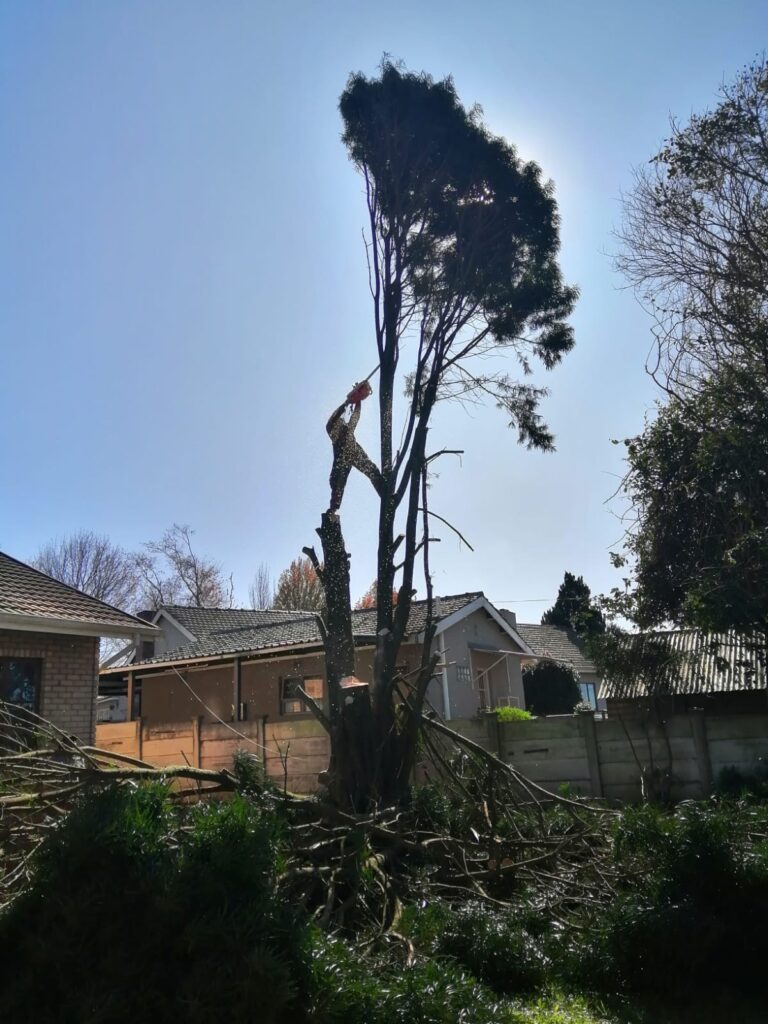
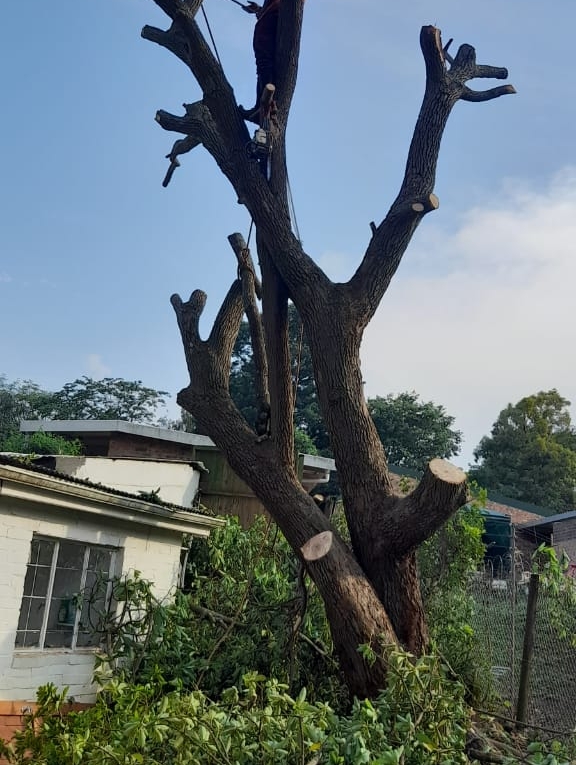
Tree Felling Roodepoort
Request a Quote
Tree felling Roodepoort BLOG
Latest News
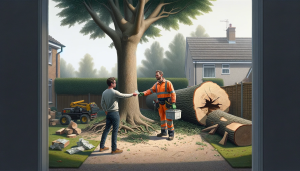
How Much Do Tree Fellers Charge in South Africa?
How Much Do Tree Fellers Charge in South Africa? In South Africa’s world of towering trees and intricate ecosystems, we’re often asked about the costs
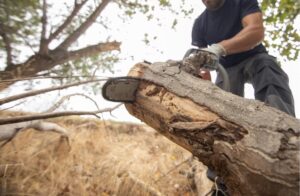
What Do I Need To Know Before Removing A Tree?
What Do I Need To Know Before Removing A Tree? There are many reasons why you might need to remove a tree from your property.
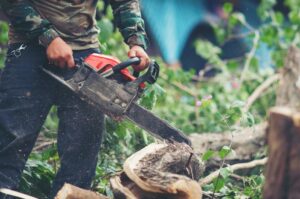
How Much Does It Cost To Cut Down A Tree In South Africa?
How Much Does It Cost To Cut Down A Tree In South Africa? If you want to cut down a tree in South Africa, you


